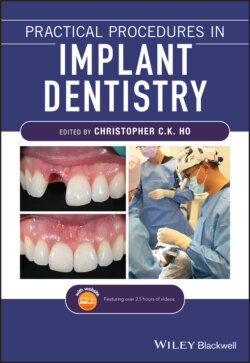Читать книгу Practical Procedures in Implant Dentistry - Группа авторов - Страница 23
2.1.7 Radiotherapy
ОглавлениеRadiation treatment may lead to oral effects such as xerostomia, hypovascularity, mucositis, fibrosis, and osteoradionecrosis.
A systematic review by Colella et al. [13] reported similar failure rates for implants placed pre‐radiotherapy compared with those placed post‐radiotherapy: 3.2 and 5.4%, respectively. Implant failure rate was significantly higher in the maxilla (17.5%) compared with the mandible (4.4%), with all implant failures occurring within three years after radiotherapy and most within 1–12 months. No implant failures were reported when radiation dose was less than 45 Gy.
The adjunctive use of hyperbaric oxygen therapy (HBO) has been suggested in the treatment of irradiated patients. HBO increases the blood‐to‐tissue oxygen gradient, improving the healing capacity of irradiated tissue by stimulating capillary growth and osteogenesis. Treatment consists of breathing 100% pressurised oxygen for approximately 90 minutes for about 20 sessions pre‐surgery and 10 post‐surgery. Esposito et al. [14] in a Cochrane review of HBO and implant treatment failed to show any appreciable clinical benefits.
Ihde et al. [15] reported in a systematic review that implants placed in irradiated bone exhibited a two to three times greater failure rate compared with non‐irradiated bone, with doses above 50 Gy having a higher failure rate. No significant differences in failure rate were found with implants placed at various intervals, either before or after radiotherapy for a clinical recommendation to be made. However, implants placed in the maxilla were at least twice as likely to fail and no specific implant could be recommended based on survival data.
